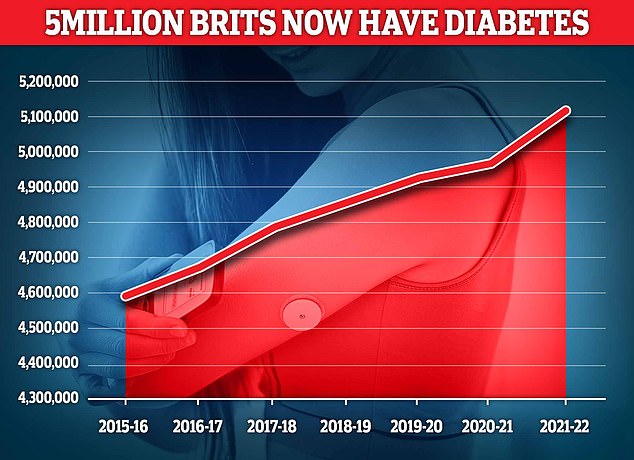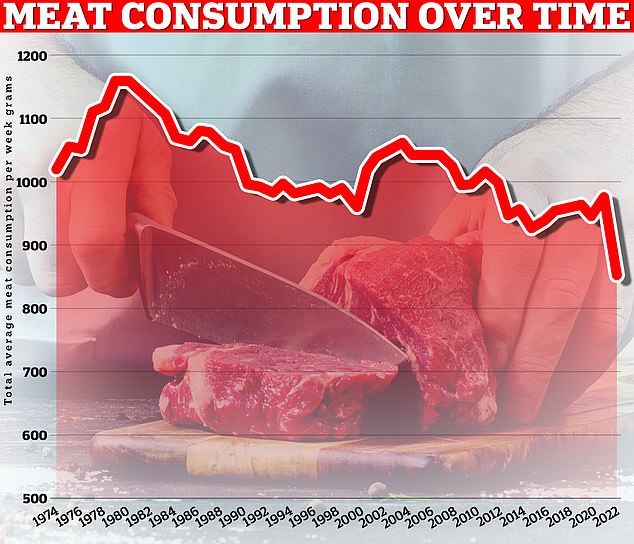It is the third most popular sandwich in Britain, close behind the tuna with mayo and cheese sandwich, according to surveys.
But a shocking new analysis could prompt ham sandwich lovers to rethink their lunch, due to surprising links to deadly type 2 diabetes.
According to research from Cambridge University, which analysed 31 studies involving 2 million people over a decade, eating two slices of ham a day increases the risk of suffering from this blood sugar disorder by 15 per cent.
It wasn’t just ham; eating 100g of any red meat (the equivalent of a small steak) increased the risk of diabetes by 10 per cent, although links were also found with chicken, albeit weak ones.
Now, experts have hit back at the paper, published in The Lancet Diabetes and Endocrinology, saying it “cannot prove” that red meat causes type 2 diabetes.
The Cambridge University researchers did not specify the number of years one would have to eat ham daily to see an increased risk of diabetes, which is a flaw in the study.
Dr Duane Mellor, a dietician and spokesman for the British Dietetic Association, said there was “missing data” in the studies analysed.
Although the authors took into account some other factors that could also explain the damage (such as BMI, smoking and alcohol consumption), they did not control for others that are “strongly associated” with diabetes risk.
This includes family history, insulin resistance and waist circumference, says Dr. Mellor.
“It is possible that the increased risk associated with red and processed meat consumption may be a result of these other confounding factors that the analysis could not account for.”
Experts say another problem is that the analysis does not differentiate between quality and type of meat.
‘Processed meats like Parma ham and prosciutto from fancy shops are probably made with fewer preservatives compared to ultra-processed slices of meat from the supermarket,’ says Dr Giles Yeo, an obesity expert at the University of Cambridge.
She added: ‘The study highlighted a small increase in diabetes risk associated with eating chicken every day, but we don’t know how that chicken was cooked.

Eating a small steak every day was also said to be associated with an increased risk of type 2 diabetes.
“The authors did not differentiate between fried chicken and home-cooked chicken. The link may be related to something in the cooking process, rather than the meat itself.”
The authors are also unclear about exactly how long one would have to eat ham or steak daily to increase the risk of diabetes.
“It’s probably a few years, maybe even ten,” says Dr. Yeo. “But very few people eat two slices of ham a day for ten years.”
Experts have long been aware of the health risks of processed red meats such as ham and bacon, and several studies link high consumption of them to bowel cancer and diabetes.
Dr Yeo says the link is thought to be due to a combination of factors, including the high amount of saturated fat in meat products, as well as the presence of compounds called nitrates.

Diabetes is now a “rapidly escalating crisis” in the UK as the number of people suffering from the disease is believed to have surpassed five million for the first time.

This chart shows how much meat Britons have bought on average each week – 2022 data shows a massive drop compared to historical levels (data does not include fish)
Nitrates are natural substances added to processed meats during the curing process.
Studies have found that they can mix with compounds in the gut, causing reactions that can damage cells in the body.
“We don’t really know for sure why this link exists,” says Dr. Yeo.
While he says the study confirms “what we already know” about the health risks of processed meat, we shouldn’t “hyperventilate” over the findings.
‘It is important to maintain a sense of balance.
‘For many people, meat is an important part of their daily nutrition and processed meat has a longer shelf life.
“Eating most foods in large quantities carries risks.”
In October, researchers at Harvard University used data from 200,000 people to show that regularly eating more than one serving of red meat a day could increase the risk of diabetes by up to 50 percent.
However, part of this can be explained by the fact that those who eat a lot of meat are also more likely to be overweight.
Study participants who consumed large amounts of red meat ate more calories overall and were less physically active compared to those who consumed less red meat.
“We found that about half of the excess risk associated with red meat consumption was explained by excess body weight,” said study author Dr. Walter Willett of the Harvard T.H. Chan School of Public Health.
“But there was still an increased risk (of developing diabetes) even after taking body weight into account.”

